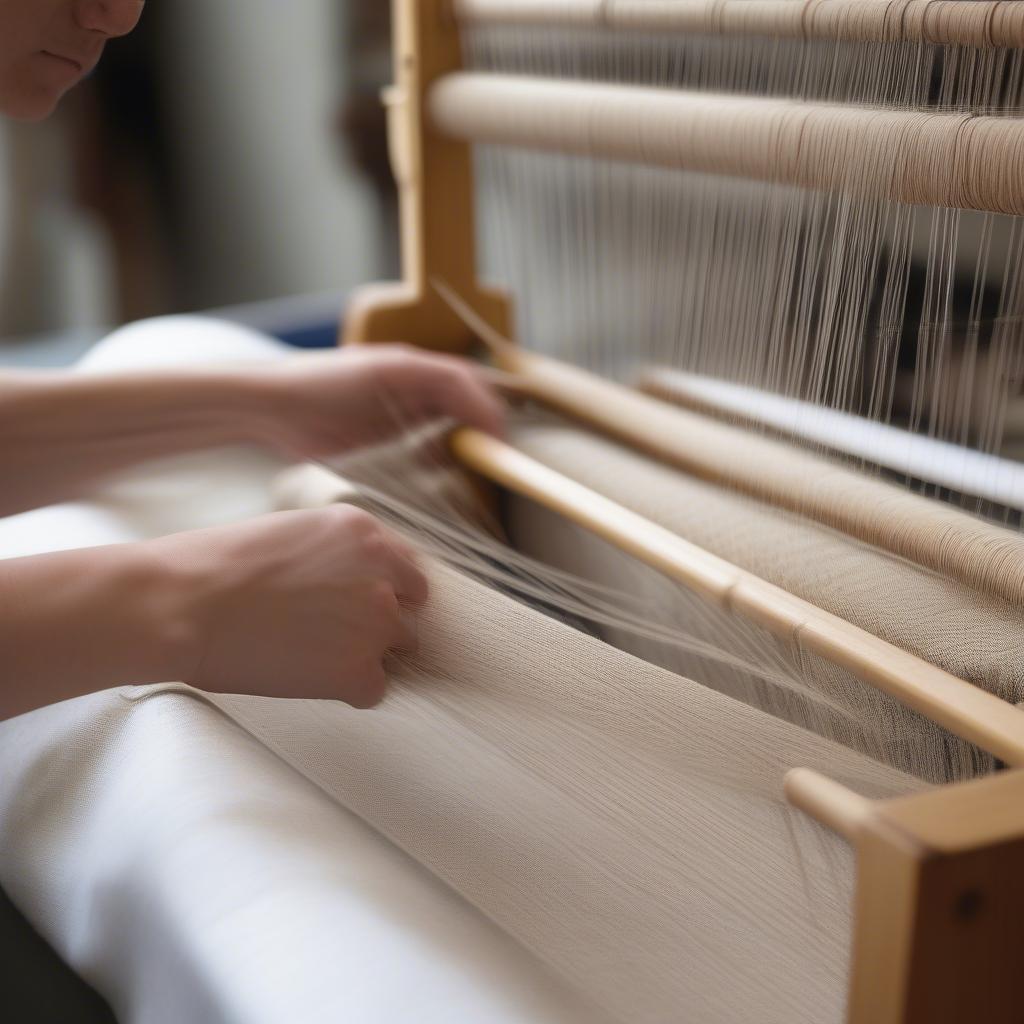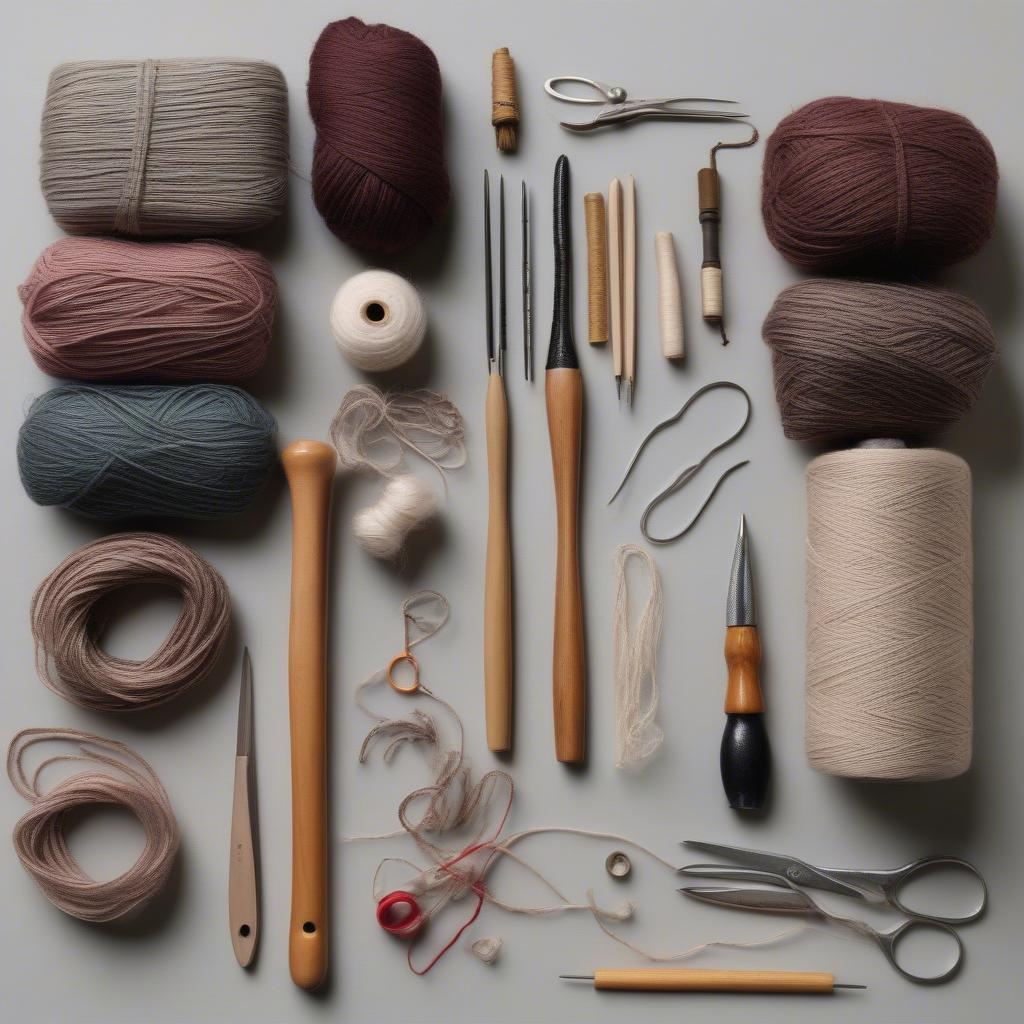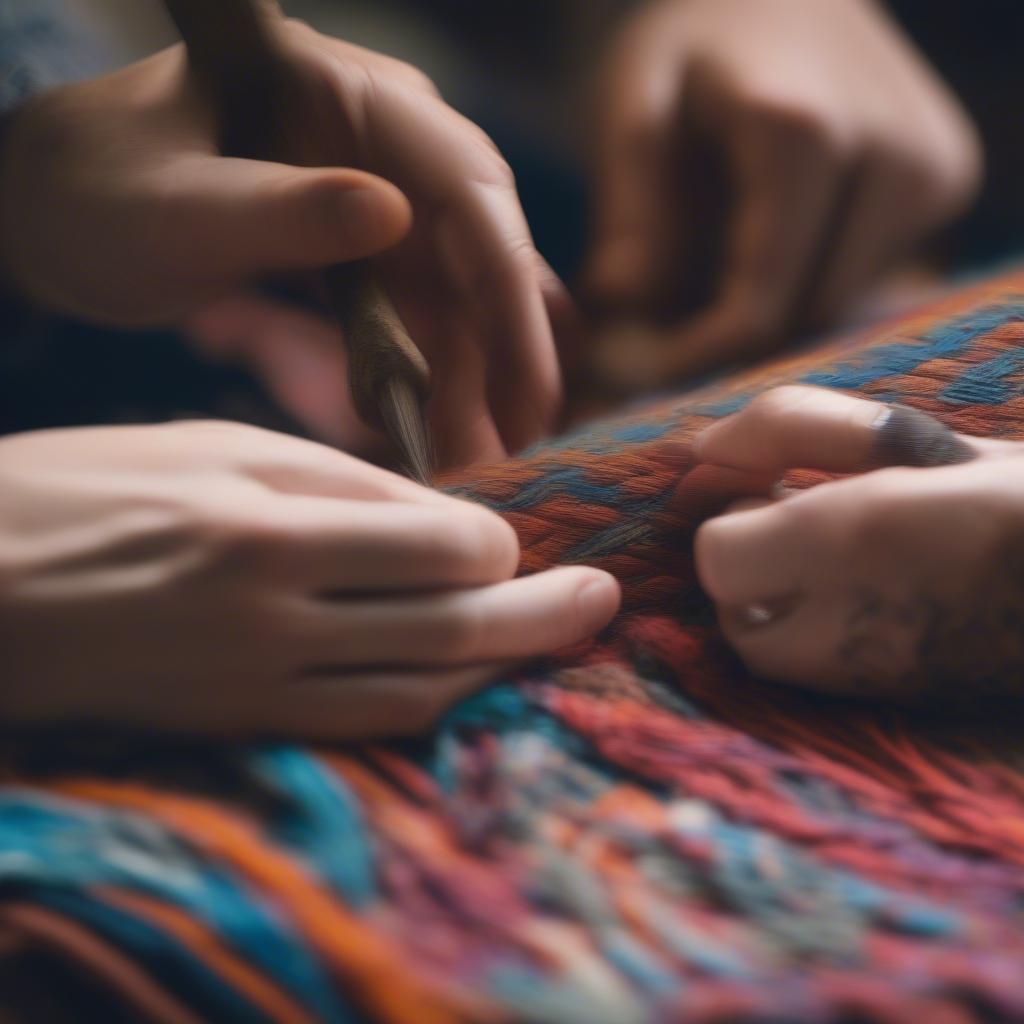Weave Table
Tapestry Weaving on a Table Loom: A Comprehensive Guide
Tapestry Weaving On A Table Loom offers a captivating blend of art and craft, allowing you to create stunning textile pieces. This guide delves into the intricacies of tapestry weaving, from setting up your loom to mastering advanced techniques. We’ll explore everything you need to know to bring your creative visions to life.
Getting Started with Tapestry Weaving
So, you’re intrigued by the idea of creating beautiful tapestries? Excellent! This section will cover the basics of setting up your table loom for tapestry weaving. First, ensure your loom is stable and at a comfortable working height. Next, warp your loom with strong, evenly tensioned warp threads. The choice of warp yarn depends on your project, but linen or cotton is often recommended for beginners.  Setting up a table loom for tapestry weaving Now, you’re ready to start weaving!
Setting up a table loom for tapestry weaving Now, you’re ready to start weaving!
Essential Tools and Materials
Having the right tools and materials is crucial for a successful tapestry weaving experience. You’ll need a variety of weft yarns in different colors and textures to bring your designs to life. A tapestry needle, preferably with a blunt tip, is essential for weaving the weft yarn through the warp. Other helpful tools include a shed stick, a beater, and a tapestry bobbin.  Essential tools and materials for tapestry weaving
Essential tools and materials for tapestry weaving
Basic Tapestry Weaving Techniques
There are several fundamental techniques that every tapestry weaver should master. The plain weave, also known as the tabby weave, is the most basic and forms the foundation of many tapestries. It involves passing the weft yarn over and under alternating warp threads. Another common technique is the rya knot, which creates a textured, shaggy surface. Experimenting with these techniques will allow you to create a variety of textures and patterns.
Mastering the Plain Weave
The plain weave, though simple, offers a wide range of creative possibilities. By varying the color and thickness of your weft yarn, you can create stripes, patterns, and even subtle shading effects. Consistent tension is key to achieving a smooth, even weave.
Exploring the Rya Knot
The rya knot adds a unique dimension to your tapestry weaving. This knotting technique creates a pile, resulting in a textured and visually interesting surface.
Creating Designs for Your Tapestry
Designing your tapestry is where your creativity truly shines. You can draw inspiration from nature, geometric patterns, or even abstract concepts. Sketching your design on graph paper can help you translate your vision to the loom.
Advanced Tapestry Weaving Techniques
Once you’re comfortable with the basics, you can explore more advanced techniques. These include techniques like dovetailing, hatching, and soumak, which allow for intricate details and complex patterns.
Dovetailing and Hatching
Dovetailing and hatching are techniques used to create smooth joins between different colors of weft yarn, preventing gaps or slits in your tapestry.
Soumak Weaving
Soumak weaving is a decorative technique that creates raised lines and textures on the surface of your tapestry.
Tips for Successful Tapestry Weaving on a Table Loom
- Maintain even tension on your warp threads.
- Use a variety of weft yarns to add interest and texture.
- Experiment with different techniques to discover your own style.
“Tapestry weaving is a meditative and rewarding craft. The process of interlacing threads allows for endless creativity and self-expression.” – Eliza Hamilton, Textile Artist
“Don’t be afraid to experiment with color and texture. Tapestry weaving is a journey of discovery, and there are no wrong answers.” – John Weaver, Master Weaver
 Advanced tapestry weaving techniques being demonstrated
Advanced tapestry weaving techniques being demonstrated
Conclusion
Tapestry weaving on a table loom is a rewarding craft that allows you to create beautiful and unique textile art. By mastering the basic techniques and exploring advanced methods, you can bring your creative vision to life. From setting up your loom to choosing the right yarns, this guide provides the essential knowledge to embark on your tapestry weaving journey.
FAQs
- What type of loom is best for beginners? A table loom is a great option for beginners due to its portability and ease of use.
- What type of yarn should I use for tapestry weaving? Linen, cotton, and wool are all suitable for tapestry weaving.
- How do I maintain even tension on my warp threads? Consistent tension is key. Use a warping board or similar tool to help with this.
- Where can I find tapestry weaving patterns? Books, online resources, and even your own sketches can serve as inspiration.
- What are some common tapestry weaving mistakes to avoid? Common mistakes include uneven tension, loose wefts, and inconsistent beating.
- How do I finish my tapestry once it’s off the loom? Techniques like hemming or adding fringe are common ways to finish a tapestry.
- Where can I learn more about advanced tapestry weaving techniques? Look for workshops, online tutorials, and books on tapestry weaving.
For further assistance, please contact our 24/7 customer service team at Hotline: +84 388 951 999, located in Hanoi, Vietnam or Tech Avenue, Suite 12, San Francisco, CA 94105, USA. We also encourage you to explore other related articles on our website for more inspiration and guidance.
